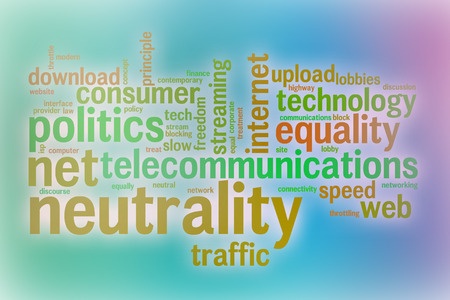29 June, 2015
In a country with almost 300m internet users, 83% of whom access the net through a mobile phone, net neutrality is an important issue for a host of stakeholders, including internet service providers, most of which are telecom service providers (TSPs), over-the-top service providers (OTTs), app developers and e-commerce companies graduating to m-commerce, as well as the users.
While internet freedom and openness is sacrosanct and there is no denying that the internet should provide equal access to all content on the web without any interference, there is also a need to maintain a level competitive playing field among all categories of stakeholders without unduly jeopardizing anyone’s interests.
What Does Neutrality Mean?
Neutral net has generally been construed to mean a non-discriminatory net for both the content providers and content users where the network carrier merely acts as a dumb pipe for the purposes of content dissemination and the network operator cannot interfere with the internet traffic in any manner whatsoever. Thus a TSP is obligated to provide uniform access to internet-based calling or messaging applications such as Viber, WhatsApp, etc. Considering that most of these applications may be in direct competition with the services provided by the TSP, ensuring and enforcing neutrality becomes a difficult ballgame and the extent of the principle of net neutrality must be circumscribed.
The scope and extent of what constitutes net neutrality has assumed significance in the aftermath of the criticism meted out to Airtel, India’s leading mobile service provider, for launching Airtel Zero, a toll-free platform that provides Airtel users free access to mobile applications that choose to join the platform. This means that if Airtel users access an app that has joined the platform, then they don’t have to pay the data charges as these would be paid by the application provider.
Prima facie, the scheme is not discriminatory as the users are not required to pay anything extra for accessing applications that have not joined the plan but get free access to applications that have. Further, the scheme does not involve creating a so-called “fast lane” for the applications that subscribe to the scheme. Does this violate the spirit of a free and open internet or is it simply a revenue maximizing business model as claimed by Airtel?
Regulatory Imbalance
In a recently released consultation paper on “Regulatory framework for OTT services” the Telecom Regulatory Authority of India observed that net neutrality has no widely accepted definition. At the same time the telecom regulator also conceded that there is a regulatory imbalance in the communication sector and stressed the need for ensuring a level playing field. After all, TSPs are not only subject to onerous licensing provisions and regulatory fees but also need to spend considerably on infrastructure to upgrade and maintain their level of services.
The rapid growth of OTT applications, especially those that offer almost free internet-facilitated communication, has suddenly brought TSPs in direct competition with the OTTs. And the competition, prima facie, does not seem fair for OTTs can easily access the infrastructure created by TSPs with no obligations, earn huge revenue from advertisements and become money-churning entities (WhatsApp was bought by Facebook for USD 19bn) while TSPs are busy negotiating myriad licences or setting up networks.
Internet-based communication and m-commerce are today’s sunrise sectors and even TSPs have started launching their own OTT applications (Reliance Jio, a TSP, has already launched a messaging app called Jio Chat for Android and iOS cell phones). In this scenario, both TSPs and OTTs have every incentive to employ anticompetitive practices and this means that some amount of regulation is indeed required. It’s here that merging the neutral net debate with the need to have a coherent and balanced regulatory regime for OTT services may not be the right thing to do.
The Way Forward
While it would be no one’s case that the principle of net neutrality needs to be sacrificed at the altar of TSPs, it is important to remember that the prime responsibility for establishing and upgrading telecom infrastructure falls on TSPs and the regulatory framework needs to ensure that they are equal to the task. After all, internet penetration in India is still very low.
Further, the ambit of net neutrality needs to be clearly defined so as to provide much needed certainty to industry participants as to what is or is not allowed. And above all, any regulatory framework must not inhibit the development of network infrastructure more than is absolutely necessary for achieving net neutrality.
For further information, please contact:
Manisha Singh, Partner, LexOrbis
manisha@lexorbis.com
Priya Anuragini, LexOrbis
priya@lexorbis.com






